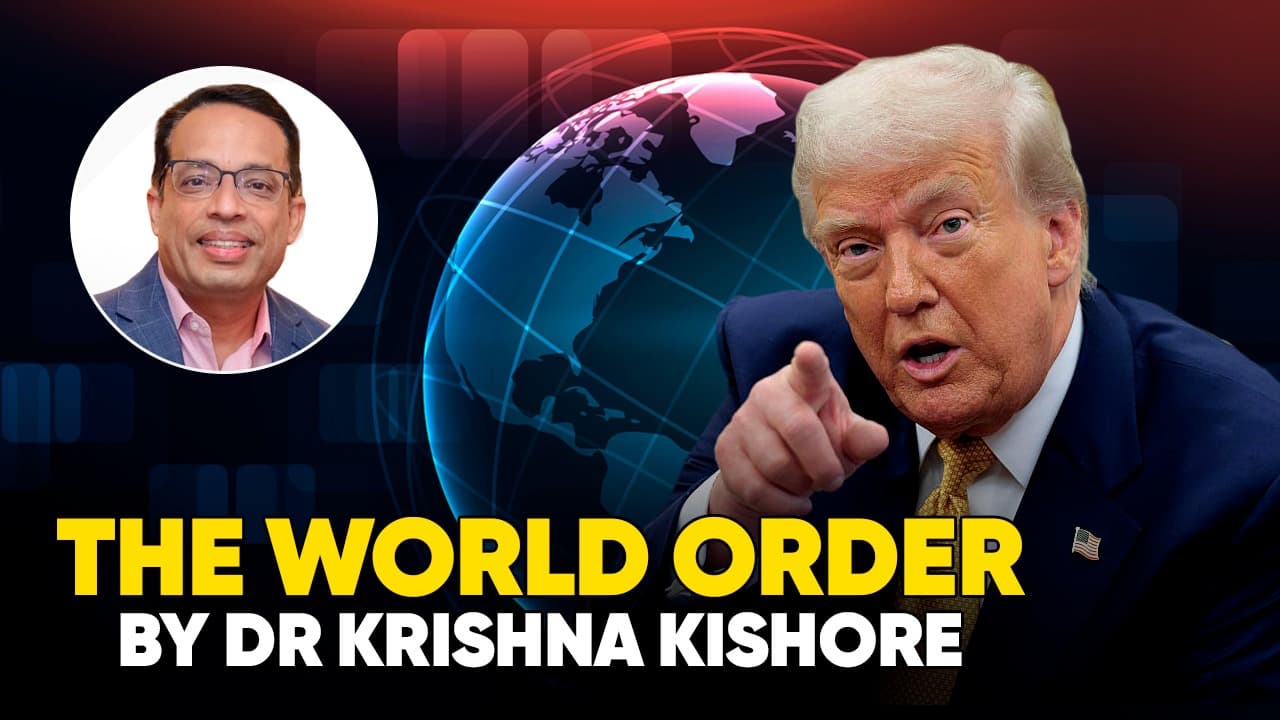Donald Trump’s tariffs reshaped global trade, straining US ties with China, India, and allies. As economic coercion and protectionism rise, countries like India pursue strategic autonomy and diversify trade to navigate the new world order.
When US President Donald Trump imposed sweeping tariffs – ranging from Chinese steel to European auto parts – he did more than ignite trade wars. He upended decades of economic diplomacy that had prioritized open markets, interdependence, and predictable rules. The global economic order, long upheld by institutions like the World Trade Organization and sustained by trust among trading partners, was shaken to its core. Nations today are adjusting not just to tariffs but to a broader transformation in how global power is exercised. Economic coercion, policy weaponization, and supply chain fragmentation are becoming defining features of international relations.
At the heart of Trump’s strategy were tariffs on over $350 billion worth of Chinese goods under Section 301. These were justified on grounds of intellectual property theft, forced technology transfer, and unfair trade practices. China retaliated with its own tariffs, deepening the divide. But the repercussions extended far beyond the US-China axis. Allies such as the European Union, Canada, and Mexico were also subjected to tariffs on steel and aluminum. While some disputes were later eased through agreements like the USMCA, the erosion of trust among long-standing partners was unmistakable.
To be fair, the United States does have legitimate concerns. It has run persistent trade deficits for decades—over $800 billion in 2022 alone—with China accounting for a large share. Trump contended that this imbalance was unsustainable, undermined domestic manufacturing, and posed risks to national security. These arguments resonate with critics of globalization who believe the current trade framework favors low-cost exporters while hollowing out industrial bases in developed nations.
Such grievances strike a chord with large segments of the American public. Yet tariffs have proven to be a blunt – and often counterproductive – instrument. They raise costs for consumers, disrupt supply chains, and rarely address the underlying causes of trade imbalances.
India Caught in the Crossfire: Strategic Ties vs. Economic Strains
For countries like India, the implications are complex. India has long sought to balance a strategic partnership with the United States while preserving foreign policy autonomy. Tariff actions against Indian exports – including the revocation of Generalized System of Preferences (GSP) benefits – have strained economic ties. Now, the recent imposition of 50% tariffs on select Indian goods by the United States has sparked deep concern in New Delhi. Such measures jeopardize a strategic partnership carefully cultivated over two decades, anchored in shared democratic values, defense cooperation, and a common vision for a free and open Indo-Pacific.
India responded by stating that it will pursue its policies based on national self-interest and safeguard its economic imperatives, making it clear that the US decision is viewed as unreasonable and unfair. While both countries continue to highlight the strength of their defense and strategic partnership, this escalation in economic friction adds a layer of uncertainty to the bilateral relationship.
India’s continued purchase of oil from Russia has emerged as the key point of friction with the White House. While previous US administrations were willing to accommodate India’s legacy relationships, the Trump administration’s ‘America First’ policy shows little inclination to do so.
In response, India is deepening its economic self-reliance through the Atmanirbhar Bharat initiative while expanding trade ties with partners such as the European Union, United Kingdom, UAE, and Australia. Unlocking frictionless overseas markets for Indian goods is vital to sustaining and driving global trade growth.
Strategic autonomy, once confined to foreign policy, has now become integral to economic planning.
The New World Trade Order: Fragmentation, Autonomy, and Realignment
Globally, tariff disputes have diminished confidence in multilateral institutions and accelerated a pivot toward bilateral and regional trade deals. Countries that once championed a rules-based order are increasingly resorting to protectionism. As the US and China deploy trade tools to advance strategic goals, smaller and mid-sized economies are recalibrating their positions and diversifying alliances.
Trump’s tariffs were not just about China, Brazil, or India. They challenged the very foundations of globalization. As the world adapts to this more fragmented landscape, economic resilience and strategic flexibility will be critical. The strength of future partnerships will hinge not only on shared interests, but on consistency, transparency, and mutual respect.
